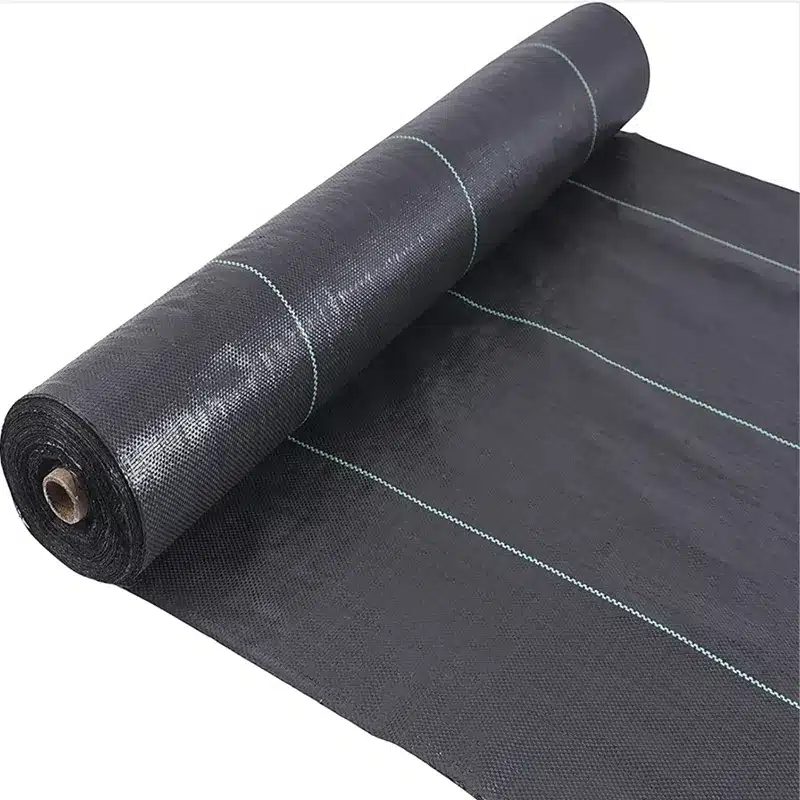+86-159 9860 6917
info@geofantex.com
geofantex@gmail.com
+86-400-8266163-44899
Geogrid Fabric for Retaining Walls serves as the optimal solution for stabilizing the ground in retaining wall applications. This geogrid is constructed using robust polyester fibers woven together to enhance strength, and it is further fortified with a PVC plastic coating to ensure enhanced durability.
Should you put landscape fabric behind a retaining wall?

Putting landscape fabric behind a retaining wall can be beneficial in certain situations. Here are a few reasons why you might consider using landscape fabric:
- Soil Retention: Landscape fabric helps to hold back the soil behind the retaining wall, preventing erosion and maintaining the integrity of the structure over time.
- Weed Control: It acts as a barrier to weeds, reducing the likelihood of weed growth behind the wall and minimizing maintenance efforts.
- Water Drainage: It allows water to drain through while still holding the soil, preventing water buildup that could exert pressure on the wall.
However, it’s important to ensure proper installation. If not installed correctly, landscape fabric can actually trap moisture and cause issues like mold or deterioration over time. It’s also crucial to choose the right type of fabric for your specific application and ensure it’s adequately covered with backfill material to protect it from UV damage and physical wear.
So, while landscape fabric can be useful, especially in controlling soil and weed issues, proper installation and choosing the right material are key to its effectiveness and longevity.
Should you put landscape fabric behind a retaining wall?
Using Filter Fabric for Retaining Walls
- Improves Drainage: Prevents water buildup by allowing water to flow through while blocking soil particles.
- Enhances Soil Stability: Reduces erosion and maintains the soil behind the wall.
- Increases Longevity: Helps extend the wall’s lifespan by reducing water pressure and frost heave.
- Clogging Risk: Can become blocked by fine particles over time, reducing effectiveness.
- Installation Complexity: Requires proper overlap and positioning to avoid shifting or bunching.
- Increased Cost: Adds material costs, though it can be beneficial in the long run.
- Best Types: Woven and nonwoven geotextiles are recommended for retaining walls, offering good filtration and drainage.
- Installation Tips: Combine with gravel and drainage pipes to maximize effectiveness and prevent clogging.
Which material is best for filling a retaining wall?
For filling a retaining wall, the best material largely depends on the function and design of the wall itself. Here are some common materials used for filling retaining walls, each offering different benefits:
- Gravel or Crushed Stone: Gravel or crushed stone is a popular choice for backfilling retaining walls because it provides excellent drainage, reducing hydrostatic pressure that can push against the wall. It’s compact and allows water to flow through easily.
- Sand: Sand is another option that offers good drainage. However, it’s not as stable as gravel and can shift more easily, which might not be ideal for all retaining wall applications.
- Compatible Materials: Some retaining walls can be backfilled with compatible materials like certain types of soil or crushed stone that can be compacted. These materials offer good stability for the wall.
- Concrete: In some cases, especially for very sturdy and permanent walls, backfilling with concrete is an option. This provides a very solid backing for the wall but doesn’t offer drainage like gravel or sand.
- Clean Fill Dirt: For retaining walls that don’t require significant drainage or for the layers above the drainage layer, clean fill dirt (free of organic material) can be used. It’s important to ensure the fill is properly compacted to prevent settling over time.
- Drainage Materials: While not a main filling material, incorporating layers of drainage materials, like perforated pipes and landscape fabric, within the backfill can significantly improve water management behind the wall.
Each material has its applications and benefits, so the choice should be based on the specific needs of your retaining wall project, including height, location, soil conditions, and drainage requirements. Consulting with a structural or civil engineer can provide tailored advice for your particular situation.
What is the difference between landscape fabric and filter fabric?

Landscape fabric and filter fabric may seem similar, but they serve distinct purposes, especially in retaining wall and construction applications:
| Landscape Fabric | Primarily designed for weed control in gardens and landscapes. | Allows light water filtration but is not engineered for heavy soil loads. | Best suited for gardening or light landscaping, rather than structural applications. |
| Filter Fabric (Geotextile) | Engineered for soil stabilization, erosion control, and enhanced drainage. | Can withstand heavier loads and pressure from backfill behind retaining walls. | Helps prevent soil particles from clogging drainage layers, extending the lifespan and stability of walls and other structures. |
Key Difference:While both fabrics are permeable, landscape fabric is mainly for weed and minor water management, whereas filter fabric is intended for civil engineering and construction, supporting soil strength and proper drainage.
In summary, landscape fabric is designed for weed control and light water filtration in gardens and landscapes, while filter fabric is used for soil stabilization, erosion control, and enhanced drainage in more heavy-duty applications like construction and civil engineering projects. Both fabrics are permeable to allow water through, but serve distinct purposes based on their material strength and design.



Get Free Sample
We’ll respond as soon as possible(within 12 hours)






















